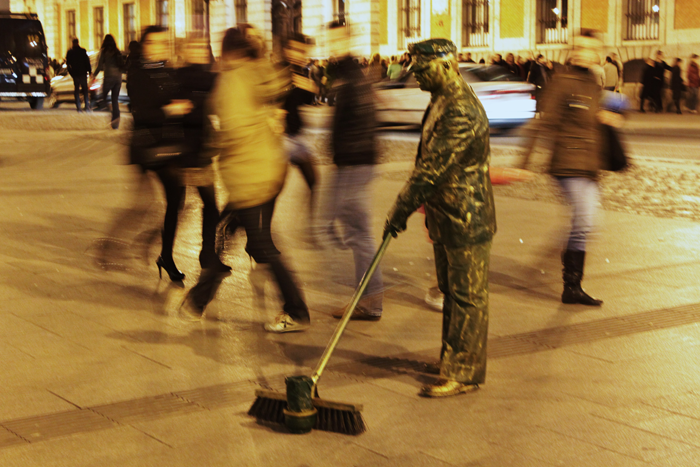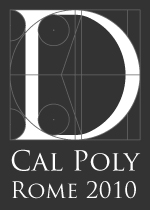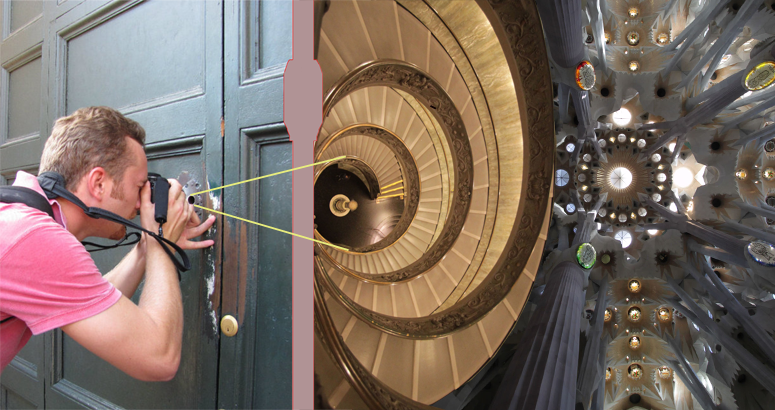Q: Why didn’t I want this recap blog question to come to fruition?
A: Because I am not a haiku artist. 15 weeks of an experience like this explained in 150 words and an image is just not right. I will continue to bend the rules, hopefully you will continue to listen.
I’ve come to know a lot of things about myself over the years but these last 15 weeks have highlighted some of the things that get me jazzed. I’ve found myself in a lot of places and through chance encounters I’ve experienced a lot that I would never trade for anything. It has become apparent that it is the surprises of fate that I live to discover. Some times I fly by the seat of my pants through cities I have yet to know without a map or a friend other than my camera and my sketchbook. I trust that my friends will be there at our next meeting place. At the seat of a cathedral, the bar of a cafe, brushing my shoulder in the isle of the train, only waiting for me to encounter them and engage them.
This trend was synthesized Friday afternoon when I ran into Ross and an opportunity presented itself to see a soccer match live and in the flesh for the first time ever. At the game, I became immersed in an environment and a ritual. I sang chants that I couldn’t understand, made hand signals that i had not translated and found friends that I did not expect. The Italian man next to me shook my arm in celebration after the first goal scored in a Lazio upset. We exchanged cultural idiosyncrasies, he shaking his hands in the air moving only at the wrist and and me offering high fives that he learned to receive. (Keep reading)
This is the way Rome is and why I love it. It is the ultimate urban environment, facilitating these chance encounters. Around every turn, on every surface, in every sound, something is waiting to open up as a story, to bring enhanced understanding. These stories might take time to come to light or they might surprise you after a peak through a key hole. Creation of wonder in my mind is the amazing thing that is repeated. I sometimes feel like a child looking through a kalidascope.
My understanding of how and why this is important is what is new from 15 weeks ago. What has changed is my understanding of how that can be important. Also, clarity for why it is I have wanted to become an architect. I want to digest these experiences and situations and make them probable possibilities in the places I create. It is my love of others that fuels me to open their lives to things they may not know. To tell a story, share and experience and know about a smile or give an embrace is my desire.
I have fallen in love again and it is now once again my driving force. I love this city called Roma and I will live in desire of it Eternaly.
Cities must remain somewhat clean to maintain happiness within the people who inhabit them and this takes work. This work depends upon the effort and upkeep of everyday citizens who use the streets, public spaces and buildings that form a city. When a city resident cares about the well being of there environment it makes a noticeable difference in the amount of work required by the government to keep the streets free of debris. Today I witnessed a young lady pick up someone elses trash to add it to the dumpster. Our apartment sorts our garbage before orderly putting it out on the street to contribute to a solution for waste management. These steps make a difference and they are often times done behind the scenes. In Madrid I caught a glimpse of more behind the scenes action that help keep a city tidy. A street sweeper stands frozen in time waiting for the theater lights of the city to die down so he can perform his duty. He waits for a coin or two to fill his can an possibly make his time worth his while.
There is a place in Roma called Flaminio. A young floor named shine moved there when she reached the age that floors usually leave the factory to find their mate. One day she bumped in to a nice wall named smooth while he was hanging out with a railing. Shine and smooth really connected and decide to head off together on a nice stroll. They moved in swooping arcs around exhibits and art, poised in a formal embrace. Being much shorter that the tall wall, shine enjoys his hovering embrace. Shine and smooth travel all throughout the place encountering other details. These details have let it be known that it is really nice to curve around, keeping a nice space from their counterpart.
Venice is a unique place because of its geography and the people who first settled there. The Veneti tribe that settled the Islands in the 4th and 5th centuries CE were most likely refugees seeking protection from the Germanic invasions of the Roman countryside. These Lagoon dwellers made a habitat out of a marsh with no fresh water. They fashioned a lifestyle that made life better for them and produced a culture like no other. Boats were essential to this way of life, providing for transportation, a means for catching fish and trading between the east and west. These unique boats allowed for maneuvering in the tidal and low water level lagoons. Foreigner boats had problems doing this and this made it a city that needed little defenses. The public spaces of the city act as water cisterns and the city developed as a very community oriented place. The government and social traditions were aimed at decreasing the likely hood of inter-family contest and war. The wearing of masks was used to hide social status and level the civil playing field if you will. Places across the globe have tried to imitate or remake this atmosphere. Few have come close.
I have been studiously searching the internet for random tidbits of interesting mind journeys and recently came upon this.
It is a Roman multi tool from the 3rd century CE that is very cool. This should allow your mind to explore the the idea that most things designed are actually improvements on some existing condition in a contemporary context or future one. The tool has an eating implement, three-pronged fork, spatula, pick, spike and knife. The romans condensed them into a tool and the swiss made it smaller and streamlined with a couple of elements swapped out. I think that is pretty cool.
Siena stands how it is today because of its good fortune of context. The city was formed on three hills stationed in the middle of a trade route, allowing for its prosperity and growth. These middle men of the middle ages are thought to have organised the early banking industry in Italy during the end of the middle ages and had a strong rivalry with Florence. Luckily, Florence found it appropriate to leave the city in tact after there takeover of the city. Sienna is unique because of these irregularities in environment. It is unique today because of its remarkable similarity to its glory days. It is hard to believe that the city stopped growing and changing in comparison to a place like Rome. The plague that devastated the city is part of the reason that Sienna is as we know it. Although it is no longer bustling with residents in the same way, it now bustles with tourists. It is a unique place because the people in charge have frozen the city in time. They have cordoned off the mid-evil streets to prevent car traffic in much the same way as the tile floor of the cathedral. The city is a museum not an evolving urban environment. Tradition is important to these people. They live in tradition of the past twice every year during the Palio horse races. They identify with flags symbolic of their neighborhood. Will this place evolve? Has it? Yes and no. Living in tradition and history is important to their well being as a place for tourism. This is what Siena is and there is no place like it.
It has come to my attention that my previous blog entry on translation was too oblique to the subject matter of architecture. I have decided to update my blog response with this entry to clarify.
It seems that every creation can be considered a translation of something that was experienced before. If so, Rome must be full of translations good and bad because of its long history of building and changing. Some of these so called bad translations might only be considered transcriptions but at the time of their creation they might have seemed relevant to contemporary life. Now they only seem like copies of an ancient time but we must remember that we view them from a different lens. Cities with such powerful histories struggle to overcome the gravity of their environment and allow the creation of something that is contemporary. Renzo Piano understands this struggle in Rome and it is evident through some of the inscriptions found in his newly completed Parco della Musica theater complex. Even the medium of the inscriptions have been translated to the present age and are shown in neon lights. One inscription is found to read,”The art/music (I insert architecture) of every epoch was contemporary”. It is almost as if Renzo Piano is asking Rome’s residents to bear with him for creating something so new in their historic city.
An example of how Piano’s architecture works as a good translation is the outdoor amphitheater that was created between the programmatic elements of the new complex. I recently found this outdoor space used in a non typical way during the film festival happening this weekend. Film actors and actresses and movie directors flanked with the proper arm candy strutted the red carpet leading to the stage of the amphitheater. Once reaching this stage area, the movie stars posed for the camera crews and put on a show for the public onlookers gathering in the theater seating. The use of the space is contemporary, meeting the needs of a present cultural environment. So what makes this translation, intended or not, good? The fact that the project can both reference the past and open up the possibilities for its future relevance and use make it good.
A translation is good if the meaning of the original work keeps its relevance in the receiver of the new work. The act of translating should add layers to the meaning found in a work and increase the depth of experience. Experiencing the translated work should be an act that keeps the original object relevant to life in the present context.
An example of a translation that is good is the development of the automobile from the horse drawn carriage. The earliest cars were basically carriages with motors installed on them. This adaptation translated the historic carriage into a modern tool of mobility. The performance of this new thing was better, and related more to the industrialization that was occurring in society at the time. The automobile has been re-translated ever since as the technology and pace of society demands it. The translations continue to use the aspects of the original that work while looking to improve the aspects that are out of alignment with the current context. No tool available is withheld from this process. The goal of the translation is to overcome the artifacts inadequacies by evolving in the present context to reestablish something great. This thing must be different because the times and places are different.
Sometimes you find a bad translation (or at least a funny one) but I will share it also.
Ripa went to Pisa (-Joel who was being responsible) last weekend. When we arrived, we found out some idiot had knocked over the tower while leaning up against it for a photo. So we decided to put it back in place for the good of the tourism industry.
History is only activated when the artifact of the past age is transformed from an object back into a story by the willing participant. This is how I learned history as a kid and how I best experience it today. When I’m plainly told what is relevant about the past I struggle to care, but when I can engage the artifacts of a story the events of the past become alive and meaningful. The same is true with architecture. The objects or stories of the past weakly stand alone but when it is possible to experience the artifact and learn the story, history (activated) becomes relevant and relate-able. Buildings preserved as objects that can’t be used loose there importance and relevance to the present culture. In the same way, cultural artifacts are lost forever if not treated with respect and preserved in some manner for future generations. This fine balance must be negotiated respectively to activating history through adaptive reuse. Because buildings left to decay often loose their inhabitants and are robbed of their ability to be experienced. Therefore, buildings must be continually updated, modified or re-inhabited with different uses to keep people using them. This use helps the occupants to find the stories of history hidden in the fabric of buildings and write expansions of that story for the future. Activating buildings in this way doesn’t muddy the clear picture of history. It updates our links to that history and assures our understanding of it.
The picture below shows that event the smallest adaptations of spaces keep them living. My bedroom is a modification of what used to be a living room or breakfast nook. Now a 3/8″ wall composed of a shelving unit and a board allow more people to live in the apartment and the rent to seem more manageable. This minor change doesn’t ruin my understanding that I live in a spacious penthouse, it instead enhances it. 








